#dheghom
Text
----- Master Post -----
#bregans
#woodsfolk
#empire
edelberg
fergunja
#halidom
#almadrasah
#laban
#dheghom
dhanǰá
#demons
#ridha
#jenna
#morgan
#lorelei
#abeba
#zahra
#fareedah
#woodlandking
#agnes
#domestic
#food
#inspo
#art ref
#bregans#woodsfolk#empire#halidom#almadrasah#laban#dheghom#demons#ridha#jenna#morgan#lorelei#abeba#zahra#fareedah#woodlandking#agnes#dhengwo#domestic#food#inspo#art ref#edelberg
1 note
·
View note
Text
DHEGHOM MEHTER
The Proto Indo European Earth Mother
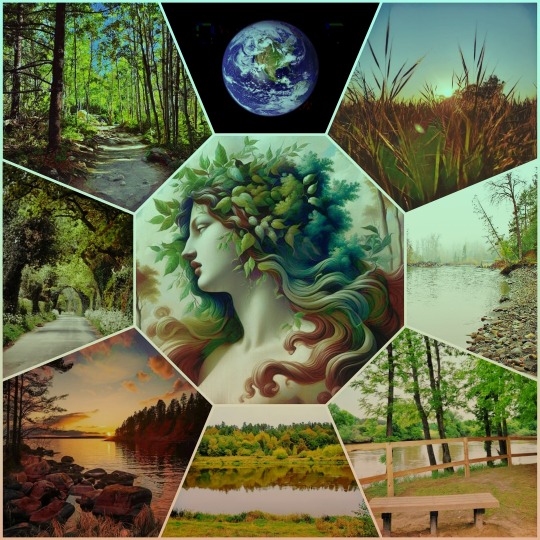
14 notes
·
View notes
Text
Dyeus- Sky Father
Dheghom- Earth Mother
Perkwunos- Lightning bolt God
Neptonos- Ocean, Water, Sea God
Suhul- Sun God
Mehnot- Moon
Pushan- Nature
Hausos- Dawn Goddess
The divine twins
God of the Underworld
Beings of Fate:
The giant serpent:
#indo european#mythology#indo european mythology#comparative mythology#gods and goddesses#germanic tribes#history#linguistics
6 notes
·
View notes
Note
wb!! i’m the proto-indo-european classpector :) this is gonna b long but i’m excited to hear ur thoughts:
dyeus: absolutely some kind of Light player, probably an Heir. dyeus stems for the pie word for bright, and dyeus is the pie daylight-sky god. he is the divine personification of the day sky, but also has an association with rain (lolar, anyone?). dyeus was also a witness to oaths and treaties, and was considered “all-seeing”. the sun was thought of as his eye. but the sun was… also deified and worshipped as a separate god. so maybe dyeus is something like an Heir of Light? his embodiment of the sky and his ability to Control and Change via Light makes me think of an Heir or a Lord/Muse, but he wasn’t a leader of the gods, and seems more similar to a really powerful Heir than a Lord or a Muse. if you think about it, being the daylight god, he probably could “shine a light” on something like an Heir of Light, albeit in a more literal way.
dheghom: just like dyeus, dheghom isn’t just a goddess of the earth, but is literally the earth personified and deified. dheghom had the titles “plethwih”, which meant The Broad One, “dheghom mehter”, which meant Mother Earth, and “dheghom dhengwo”, which meant Dark Earth. Dark Earth is especially interesting, because dheghom was the wife and was seen as the compliment of dyeus — though in many ways they were the opposite, they were very much two sides of the same coin. interestingly, dheghom didn’t bring fertility and life herself like most earth goddesses are thought of as doing — she only did this with dyeus. therefore, Life doesn’t really work for an aspect, and the complementary nature of dheghom with dyeus + the darkness theme makes me think of Void. i’m tempted to say she’s a Knight of Void, due to academic reconstructions saying she may have been viewed as a Giver of good as a result of her and dyeus fertilizing the earth. while this is still in combination with dyeus, it should be noted that Void isn’t just nothingness and darkness — it’s also the material world. Light is the world of ideas, the metaphysical, and by Giving dyeus Void, she makes concepts real. alternatively, she could be a Maid or Sylph of Void, as she is Creating the material world — it helps that, if any class would have a “mother” subarchetype, it’d probably be Maid and Sylph (see: the maryams).
perkwunos: you know how i said dyeus was associated with rain? while that is true, there is a diety more directly associated with rain — the weather god, perkwunos. he was called upon during times of drought, and was associated with rain, lightning, thunder, mountains, some kind of weapon, stone, and oaks. though thunder and lightning were viewed as Destructive, his association with rain also gives him an association with Creation and Life. his association with oaks also brings Life to mind. as a result, i’d give him the title of Bard of Life. his association with weaponry and Destruction brings Prince and Bard to mind, and perkwunos translates to either “the Striker” or the “Lord of Oaks”. as weather dieties in indo-european religions are often either the head god or the son of the head god, a Royalty archetype is easy to argue for. the reason i opt for Bard over Prince is due to the wildcard aspect of Bards — weather is uncontrollable and seemingly random.
the divine twins: according to wikipedia, “one is represented as a physically strong and aggressive warrior, while the other is seen as a healer who rather gives attention to domestic duties, agrarian pursuits, or romantic adventures”. despite this difference, they were both seen as healers and helpers, in particular to shipwrecked humans. they also raised the sun by pursuiting their consort, the morning star. due to this, one — specifically, the one who gives attention to “romantic adventures” — is likely a Sylph of Heart. he is a Healer, and though by raising the sun both Create Daylight, the reason for this is because of attraction — Creating through Love. for the other, his association with war and aggression (in particular as divine aid in battle), and the fact that both were associated with… dance, for some reason? makes me think that he’s either a Knight of Rage or a Knight of Time. Rage and Time are both associated with Battle, and can be connected with dance for different reasons — Preforming, and Rhythm. i’m leaning more towards Knight of Time, though, as by helping to raise the sun each day, he Gives Time — without the sun, there would’ve been no way to tell the time. although both are described as healers, my proposed Sylph of Heart has more emphasis on the Healing aspect, and my proposed Knight’s emphasis on war and battle makes me think of Protection and Weaponizing.
hewsos: hewsos is the dawn goddess, and is depicted as the opener of the gates of heaven, and a *reluctant* bringer of light, whose reluctance she is often punished for. she may have been considered immortal, and the sun rising each day could’ve been seen as her being eternally reborn. she also has an association with dancing. she’s definitely a Maid, with her reluctance to bring light being punished, and her constantly being reborn. she has a lot of Light associations, being called a lightbringer, certain cognates related to light stemming from her name, and being… the personification of dawn & the morning star. considering she’s a reluctant bringer of light, Maid of Light seems to be the most likely — tying in with Maids being oppressed by their aspect — but it should be mentioned that her father is dyeus, an undeniable Light player. perhaps that’s his influence on her, and the reason she’s so reluctant is because she’s not actually a Maid of Light, but forced to act like one. however, the evidence seems to point to her being a Maid of Light.
sehul: she’s literally the sun. she’s described as being the eye of dyeus, too, which makes me think of a Seer of Light. after all, dyeus wouldn’t be all-seeing if it weren’t for her — he wouldn’t know all he does if she didn’t See everything. there’s also mehnot, the god of the moon, but i can’t find anything on him.
sorry that this is so long! i’d love to hear your thoughts :D you’re my favorite classpect analyzer on here so i rlly do hold ur opinion in high regard. ty!! -🛐
Oh goodness! That is a loooot, I totally forgot you mentioned about these and I'm glad you dropped them even if it took me a month to get back! :o I don't have much input on my end, considering I didn't know about any of these deities until right now, but judging by your descriptions, your reasoning is solid. The one that I could be like, 'hmm', is probably Dheghom- Earth Goddesses and Mother Earth, there's a lot of conceptual ties of this kind of deity to Space specifically, but also Void works really well based on your description, so like, Space would almost be thematic more than fitting.
Either way, this is giving me a whole bunch of stuff to look up on Wikipedia later, but on a cursory glance, I do like your takes here. X3
8 notes
·
View notes
Text
KARITI Reveals Haunting First Single 'A Mare Called Night' from Upcoming Album "Dheghom"
[photo: Ferdinando Bassi]
Lay Bare Recordings are proud to have signed dark ambient act, kariti, for the release of her upcoming, new studio album titled Dheghom! kariti’s second full-length offering will be available as Vinyl on February 2, 2024; the album pre-sale has just started at: https://laybarerecordings.com/release/dheghom-by-kariti-lbr053. A lyric video for the first single, A Mare…
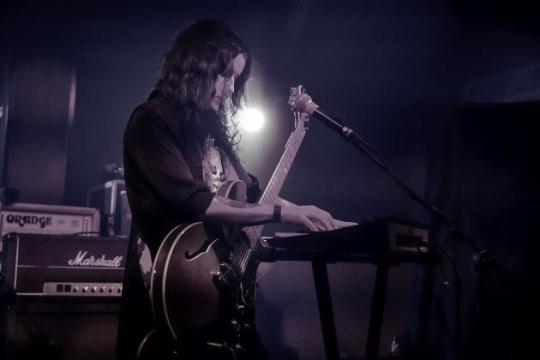
View On WordPress
0 notes
Text
Like "Carnonos" (whoever actually) is associated with deer and has antlers, not horns like Pahuson.
Has a big function in the mechanisms of death and the Otherworld in general. He collects the pre born souls that float down to Dheghom from the Sky Mother and helps to direct them into their physical manifestations. And then when something dies, he helps to direct their breath of life, pneuma so to speak, back to the Sky Mother where that energy is recycled into preborn souls to once again float down.
Then their consciousness, the manifested and transformed part of the soul, goes to the afterlife. What makes you "you" lives on in the Otherworld and your vitality or energy or spirit of whatever is recycled back into the creation of new preborn souls.
He doesn't make any of it, he's a conductor and guard and keeper. I firmly believe that every physically manifested thing, once dead, lives on in the Otherworld. Every blade of grass, every mountain now a valley, its all there. Every animal and human. Our pneuma or spirit or energy or whatever the fuck you want to call it is recycled but our consciousnesses aren't reborn, they live on.
Hel (or whatever you want to call her) is part of this process of death to life and life to death. She brings it about physically in the material world and is a caretaker of our immortal souls in the afterlife, where we need rest and love and transformation and healing. That's what she does! Death is but a stage.
Eventually I think we can transform our souls enough to be reborn if we want, or to ascend to the Sky Mother and idk wtf happens there, that's cosmic. Angels and shit come from there.
Pahuson takes care of nature and is a shepard for the preborn and newly deceased souls.
#okay sorry this went deep into my weird beliefs but here they are enjoy#this is my personal....whatever
0 notes
Photo

-Dyeus, Ancient sky father-
The hypothetical “sky father” of the Proto-Indo-European civilization, a personification of the day lit sky. Dyeus was thought to be an all-seeing, sun-eyed god. His opposite and consort is thought to be Dhéghōm or Plethwih, the also hypothetical earth goddess, whom he impregnates with his fertile rains to create new life. The Proto- Indo-Europeans are a hypothetical prehistoric ethnolinguistic group who lived across Eurasia and are thought to be the ancestors of many ancient civilizations. After dispersing across the world and millennia passed, common etymological roots can still be found across ancient civilizations in Europe, Africa and Asia. Gods whose names derive from the root dyeu or who are called by some variation of the title “sky father” are thought to share a common ancestor. While non-attested in written or archeological materials, it’s proposed by researchers this god would be called Dyeus based on naming conventions, and would’ve been worshipped by the ancient Proto-Indo-Europeans. Possible gods who may share an etymological root with him in some way include the Rigvedic Dyaus, the Greek Zeus, the Norse Odin, the Slavic Stribog, the Irish Dagda and many others.
#dyeus#proto indo european#dheghom#plethwih#dyaus#zeus#odin#stribog#dagda#mythology#character design#digital art#shin megami tensei v#persona 5
45 notes
·
View notes
Photo
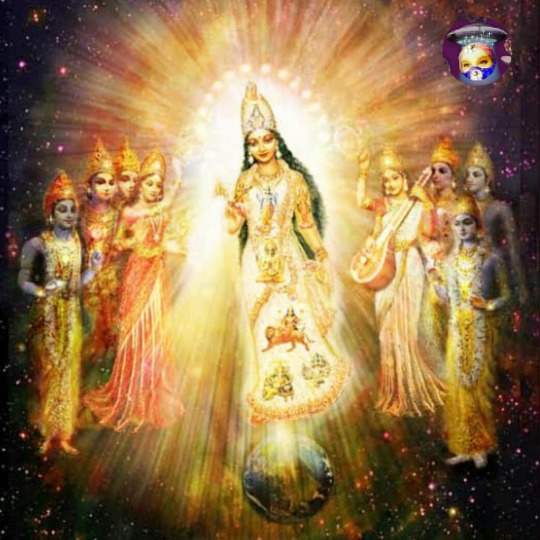
#boanoite🌌 #adishakti #shakti #mother #supreme #spirit #durga #parvati #lakshmi #sarasvati #egg #galaxy #adiparashakti #parashakti #saraswati #shreembrzee #krishna #om #omniverse #dheghom #earth ॐ⊕♁☯☧♀🌌🌓🌍🗺🌐 04/07/2021 Julho Domingo Boa noite!🙏💓🌟💫🌠 (em Vila Industrial, São Paulo-Sp) https://www.instagram.com/p/CQ7KxWknUPp/?utm_medium=tumblr
#boanoite🌌#adishakti#shakti#mother#supreme#spirit#durga#parvati#lakshmi#sarasvati#egg#galaxy#adiparashakti#parashakti#saraswati#shreembrzee#krishna#om#omniverse#dheghom#earth
0 notes
Photo
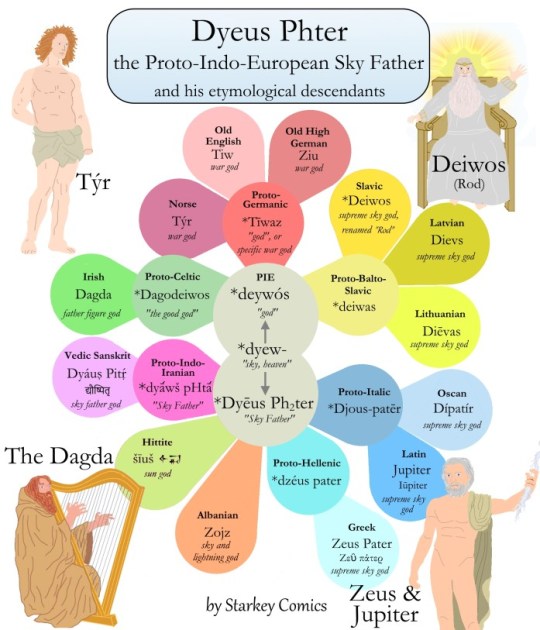

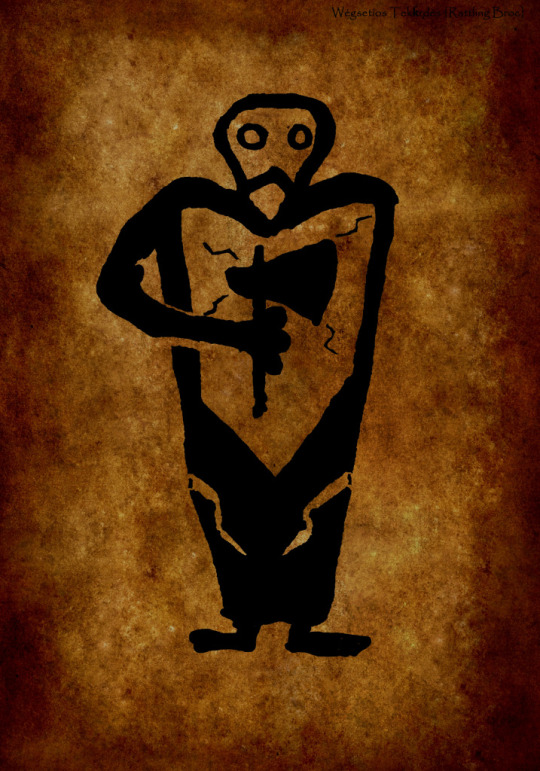

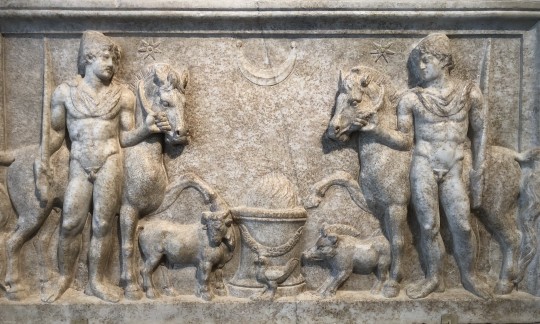
Proto-Indo European Deities
One of the most likely theories, considering the origins of most of the Germanic spiritual practices and Gods, is that they have originated from the bronze age people who came into contact with the Proto-Indo Europeans. These Proto-Indo Europeans spread their language, traditions, way of life and spirituality all across Europe (with a few exceptions). In this post I want to name several reconstructed Proto-Indo European deities and their etymological descendants throughout Europe, and the middle east and India.
Dyeus:
At first I want to begin with Dyeus. This is the reconstructed name of the chief God of the Proto-Indo European pantheon. The name means 'brightness of the day' and is reconstructed with the help of Grimm's law and by carefully researching related languages such as Sanskrit, Ancient Greek, old Armenian and old Anatolian. All of the Indo-European languages, modern and old, seem to have a common root word for God.
The meaning of the name plus the fact that the root is still visible in every Indo-European language, suggests that this deity was incredibly important, most likely the most important of all deities. Dyeus is the sky father, associated with brightness and the skies and perhaps creator of mankind according to the Proto-Indo Europeans. There are however no written sources nor physical evidence describing Dyeus so his exact role will forever be a mystery.
If we look at the Proto-Indo-European root 'Dyeu', we can discover many deities with a very similar name and role. These deities are likely etymological descendants of Dyeus, here is a list:
Proto-Indo European: Dyeus
Hellenic: Zeus
Hittite: Sius
Thracian: Zi or Diu
Vedic: Dyaus Pittr
Indo-Iranian: Dyaus
Anatolian: Diu
Roman: Jupiter
Slavic: Diva
Baltic: Deiwas
Germanic: Tiwaz and Wodanaz
Gaulish: Deuos
Gaelic: Dagda
Perkwunos:
This is the reconstructed name of the thunder/weather god of the Proto-Indo European pantheon. The meaning of the reconstructed name means either: 'the striker' or 'lord of the oaks'. Two roots are possible for this theory, the root 'Per', which means 'to strike' and perkus 'the oak'. It is also possible that both roots are actually united since it is possible that people associated high trees, like oaks, with lightning strikes.
We do not know how Perkwunos looks like but if we compare his etymological descendants with each other, it seems that Perkwunos might be wielding a weapon like a hammer or a club. He's not only the god of thunder but appears to be controlling all of the weather. Perhaps the Proto-Indo Europeans prayed to him when they wanted rain for their crops or when they wanted a natural disaster to stop.
Here is a list of his etymological descendants:
Proto-Indo European: Perkwunos
Slavic: Perun
Baltic: Perkunas
Vedic: Parjanya/Indra
Greek: Heracles and/or Keraunos (the name of Zeus' bolt)
Gaulish: Taranis
Gaelic: Tuireann
Germanic: Donar/Thor
Thracian: Perkos
Scythian: Pirkunas
Nuristani (Afghanistan): Pärun
Illyrian: Perendi
Neptonos:
This is the reconstructed name of the God of the seas/waters. The name literally means 'Grandson of the waters' and it has been reconstructed by observing all of the sea deities of the Indo-European cultures. Since we have no image or written sources about this deity, we do not know how he would have looked like, perhaps he was holding a staff like most other sea deities. We also do not know his exact role in the Proto-Indo European pantheon but he is apparently master of all the waters of the earth. Here is a list of his etymological descendants:
Proto-Indo European: Neptonos
Hellenic: Neptune
Roman: Poseidon
Gaulish: Nodens
Gaelic: Manannán
Germanic: Nehalennia/Njördr/Nerthus
Vedic: Varuna
Illyrian: Bindus
Baltic: Bangputys
Suhul:
This is the reconstructed name of the deity related to the sun. There is less evidence for this deity but it seems that the Proto-Indo European root for sun 'Suhul' is connected to quite some sun deities. Here is a list of etymological descendants of Suhul:
Proto-Indo European: Suhul
Gaulish: Sulis
Hellenic: Helios
Roman: Sol
Germanic: Sól
Slavic: Dazhbog
Baltic: Saule
Vedic: Surya
Mehnot:
This is the reconstructed name for the deity related to the moon. It is a common Indo-European tradition to have two deities related to the sun and to the moon so it is possible that they have a common root with a Proto-Indo European Moon God. Here is a list of etymological descendants of Mehnont:
Proto-Indo European: Mehnot
Gaelic: Elatha
Hellenic: Selene
Roman: Luna
Germanic: Máni
Slavic: Hors
Baltic: Menulis
Vedic: Soma
The divine twins:
Sadly it is impossible to reconstruct the name of these divine twins but it is a well accepted theory that these are either two brothers or brother/sister of the Sky God Dyeus. Almost every Indo-European religion has a divine twin riding either a horse or another animal. The role of this twin is unclear since divine twins from related cultures seem to have seperate roles. Here is a list of etymological descendants of the divine twins:
Proto-indo European: divine twins/name unknown
Vedic: The Asvins
Baltic: the sons of Dievas
Hellenic: Castor and Pollux/Dios-Kouroi
Germanic: Frey and Freya/Hengist and Horsa
Polish: Lel and Polel
Indo-Iranian: Nakula and Sahadeva
Etruscan: Tinas Clenar/sons of Jupiter
Gaulish: Divanno and Dinomogetimarus
Welsh: Bran and Manawydan
Dheghom:
This is the reconstructed name of the earth-Goddess. Mother earth seems to have been known since paleolithic times although we can of course not provice any proof for this theory. She's most likely the wife of the Sky God Dyeus as this is usually the case in Indo European religions. She represents growth, fertility and death. The meaning of her name is still being debated but it might mean 'the broad one'. Here is a list of her etymological descendants:
Proto-Indo European: Dhegom
Gaelic: Danú
Hellenic: Hera or Gaia
Slavic: Maty Syra Zemlya
Baltic: Zemyna
Roman: Juno
Thracian: Zemela
Germanic: Nerthus/Jörd
Vedic: Prithvi
God of the Underworld:
Sadly it is also not possible to reconstruct the name for the God of the underworld but since virtually every Indo European religion has a God/Goddess of the underworld, it is very likely that the Proto-Indo Europeans also had a deity to guard the underworld. Here is a list of etymologically related Gods of the underworld:
Proto-Indo European: unknown
Vedic: Yama
Hellenic: Hades
Roman: Dis Pater
Slavic: Veles
Baltic: Velinas
Germanic: Hel/Holle
Gaelic: Aed
Pehuson:
This is the reconstructed name of a deity representing nature itself. We do not know how he looked like or what his attributes were, we do know that many Indo-European deities have similar Gods representing nature. Here is a list of etymological descendants of Pehuson:
Proto-Indo European: Pehuson
Gaelic: Cernunnos
Gaulish: Cernunnos
Germanic: Ullr/Frey
Hellenic: Pan
Roman: Faun
Vedic: Pushan
Hausos:
This is the reconstructed name for the deity of dawn or spring. She represents the rebirth of nature and warmth thus her attributes are quite similar to the solar deities. Yet again most Indo-European religions appear to have a deity of dawn/spring. Her name means 'to shine'. Here is a list of her etymological descendants:
Proto-Indo European: Hausos
Gaelic: Brighid
Gaulish: Brigantia
Germanic: Eostre
Hellenic: Eos
Roman: Aurora
Slavic: Zorya
Baltic: Ausrine
Vedic: Ushas
Here are other beings that are present in virtually every Indo European religion and thus have likely a common root in the Proto-Indo European religion:
Beings of fate:
There is a very big possibility that the Proto-Indo Europeans believed in three Goddesses or beings who were able to spun or weave the fate of all living beings in the universe. They often appear as either three young maidens or three women representing the three stages of life or the three stages of time (past, present, future). Here is a list of possible etymologically related beings of fate:
Proto-Indo European: name unknown
Hellenic: the Morai
Germanic: the Norns
Hittite: the Gulses
Roman: the Parcae
Baltic: Deives Valdytojos
Slavic: Rozanicy
Albanian: the Fatit
Gaulish: The three Morrigna
The giant serpent:
Almost every Indo-European religion has an epic story of a hero battling a gigantic snake/dragon/serpent. This hero is often the thunder God or another deity related to weather. Because this theme is so incredibly common, it is a very likely theory that the Proto-Indo Europeans also believed in a giant serpent/dragon and a thundergod (Perkwunos) who fought it. Here is a list of etymologically related serpents:
Proto Indo-European: Unknown
Hittite: Illuyanka (slain by Tarhunt)
Vedic: Vritra (slain by Indra)
Hellenic: Typhon (slain by Zeus)/ Hydra (slain by Heracles)
Germanic: Jörmungandr (fought by Donar/Thor)
Persian: Zahhak (slain by Fereydun)
Slavic: Veles (slain by Perun)
The Christian/Jewish story of the Genesis: Tehom
Sumerian: Tiamat
Armenian: Vishap (slain by Vahagn)
Gaelic: Meichi (healed by Dian Cecht)
I am so sorry for this incredibly long post but I hope you have some more insight into the Proto-Indo European pantheon and realise that all European deities (with a few exceptions) all represent the same attributes/roles/beings. The stories of the Germanic Gods are not unique but a shared story with other European and even Indian native religions.
Here are images of:
Dyeus and his etymological descendants by Starkey Comics,
Perkwunos and his etymological descendants by Starkey Comics,
A modern interpretation of Perkwunos by Wegsetios Tekkerdes,
An image depicting several Serpent/hero battles.
An image representing the divine twins (Castor and Pollux),
345 notes
·
View notes
Text
I do wonder about modernized pantheons sometimes, how the gods would change in the lens of modern science and what we know now that we didn't then.
Let's use the Proto Indo European pantheon, with a bonus god or two from the Greek pantheon because that feels like a good starting point. At some point, I do want to examine the Cthulhu Mythos as a Pantheon, but we'll get there as we get there. I'll be using my own system for writing out these names, because P.I.E. generally looks like a sneeze otherwise.
Let's start with the Daylight Sky Father, Dyews Ph'ter. The God of Atmospheres seems a fitting enough title for him. His domain expands into all Atmospheres, even the one on Venus. He rules the Atmospheres of the Planets, I feel like that's simple enough of a step.
The Nocturnal Sky, Werunos. We've given the title of Atmosphere God to Dyews Ph'ter already, so what does the Night Sky become? Well, what can you see on a clear night when the lights are low? You see the stars, the galaxy. Inverse to the Daylit Skies, we have the Endlessly Expansive Darkness, so I feel Werunos fits as a sort of Cosmic Skies God in contrast to the God of Atmospheres.
The Earth Mother, Dheghom. I don't feel like she personally changes much, outside of the solar system changing from Geocentric to Heliocentric, but she does raise an interesting question. What about other planets? A Planet Mother title fits definitely, but we're basically ready to go to Mars, so does Mars have their own specific deity, or do all planetary bodies share a Planet Mother? What about both? We could make Dheghom into the Planet Mother, but then we would need a specific Earth Mother, unless she does both. Or this works like Dyews Ph'ter, where one rules all.
The Dawn, H'ewsos. Goddess of Beginnings, of the Rising Sun. So, we know the Geocentric model is Astronomically false, we have overwhelming evidence for this, so H'ewsos has to change a bit. I say the rotations of the planets, what makes the sun rise and fall in the sky. She would work hand in hand with the Charioteer figure, the Apollo, to give the celestial bodies their spins.
The Sun, Seh'ul. The Sun sits as the center of the Solar System, what the Earth revolves around. The Sun revolves slowly around the Milky Way, and the Earth revolves around the Sun, so any traditions with an Apollo figure that chariots the sun across the sky would have to change to something more Heliocentric, Apollo becoming the orbits of the planets. Just as H'ewsos gives the planets their Days, the Charioteer gives them their Years and Seasons.
The Moon, Mehnot. To modernize the Moon God, we have to ask a question that almost feels Zodiacal. We've been there, we can go back basically whenever, so how does that change things? The moon rules the tides, his pull is present on Earth at all times. I figure, just as Dheghom rules the Earth, so does Mehnot rule the moon and the tides of Earth.
The Weather, Perkwunos. The Oaken Storms, equally destructive and benevolent with the life giving rains and the sky shaking storms. He doesn't change much, I just wanted to mention him. Maybe he expands a bit into the Movements of the Atmospheres, something to give Jupiter their storms and such.
The Guardian Guide, Peh'uson. The Pastoral God of Travellers. I don't see him changing much, honestly. Travel still happens, not as much right now because of COVID, but it's not like his dominion going to change that much.
The Original One, Chaos (Greek). This one can so easily relate to the birth of the universe it's not even funny, and their death can be believed to be a few things. The Big Crunch, the Big Rip, Chaos will die in not a bang, but a whisper.
#cosmic speaks#cosmic faith#proto indo european#proto indo european pantheon#greek pantheon#paganblr#paganism#hellenistic polytheist#greek polytheism
6 notes
·
View notes
Text
[Bandcamp] Urkoros - Eshri Dheghom Tewteh https://t.co/xYTZuMwpJz http://pic.twitter.com/kbkubSXycF
— Raw BM Music (@rawbm_bot) July 24, 2017
0 notes
Text
Currently deities and shit:
Pahuson (PIE, the wild, roads, borders, psychopomp, hunting, flocks, nature. Pan and Hermes are hypostases of him, name means "protector". Accoriding to Serith's interpretation, Carnonos may be a loose functional cognate)
Lady Hel (death, decay, life, rebirth, the afterlife, nature cycles. Really divorcing her from the scant Norse ideas and I think of her as a daughter of Dheghom, the Earth Mother. Probably goes by many other names but I'm comfortable with this one)
And that's kinda it, that's kinda who I'm concrete with as of now.
Whoever I've been calling Carnonos has little to do with the Gaulish version. This deity is about magic, the otherworld, death. Who knows, not I. He's either very old, pre/non indo european, a very primordial deity, or a personal spirit. Guess I could just ask him at some point!
0 notes
Text
My Recon PIE Pantheon for Simplicity's Sake
So here's what I've come up with in my research, feel free to use this as a model/inspiration for your own practice.
Generation 1
Primordial Creation
1st Function- Realm: Heaven/Night Sky. Realm Controller. Male, "Werunos"
2nd Function- Realm: Atmosphere/Day Sky. Realm Controller. Male, "Dyeus"
3rd Function- Realm: Waters/Underworld. Realm Controller. Male, "Neptonos"
3rd Function- Realm: Earth/Underworld. Realm Controller. Female, "Dheghom" + Consort, Storm/Rain Lord, "Perkwunos"
Generation 2
1st Function- Realm: Night Sky. Female, "Luna"/The Moon
3rd Function- Realm: Day Sky. Female, "Sawel"/ The Sun
Multi Function Twins: Morning Star, 2nd/3rd; Evening Star, 1st/3rd. Both Male. "Diwos Sunu". Same mother (Dheghom), Dual Paternity (Dyeus and Werunos or Neptonos)
Generation 3:
The Light King- 4th Function Positive. Younger Brother. "Frawja"
The Liminal King- Liminal/Between Functions. Non familial but he's in there regardless. "Paxuson"
The Dark King- 4th Function Negative. Older Brother, connected to death. "Karnonos/Dusnos"
This is based upon recon PIE deities, functional hypotheses, familial hypotheses, and shit loads of independent research. I'll do a small rundown of the deities and their associations later on.
0 notes
Text
Proto Indo European Version: I Actually Did Research
To preface: most of my PIE studies have been based upon linguistics, which is great, but is at the same time not great because names are very, very fluid.
I took a different course and switched to looking and deity functions in a cross cultural way, and also studied some more broad topics relating to the pantheon. It is as such:
Generation 1:
Primordial Creatrix "Nowkts"
Heaven/Night Sky "Uerunos"- 1st king, grandfather, sacral/1st function
Atmosphere/Daylit Sky "Dyeus"- father, 2nd king, usurper, force/2nd function
Earth "Dheghom"- mother, queen, abundance/3rd function
Waters/Underworld "Neptonos"- uncle, abundance/3rd function
Generation 2:
Moon "Menot"- male, sacral/1st function
Sun "Sawel"- female, abundance/3rd function
Divine Twins "Diuos Sunu"- abundance/3rd function but dual aspect: one warlike, one peaceful. Half brothers, said to be the Morning Star and the Evening Star
Bright King "Lugos/Frawja"- 4th function positive (as having 1st, 2nd, and 3rd function attributes), king of the younger gods, 3rd king
Dark King "Dusnos/Karnonos"- 4th function negative (as having "other", not categorical qualities) god of the land of the dead, opposing king, older brother of Light King
Extra Familial:
Liminal Agent "Pahuson"- having liminal qualities, protector, in between cults and paired opposites. Tutelary deity, psychopomp
Fire In Water "Apam Nepots"- Protector of source of life/wisdom/wealth that resides in water
This is where I stand currently, and the names and more specific functions of the deities change over time and space but this is the basic outline.
Things that predate this system include Vanir-like deities and the sun cult as well as water/boat based deities and sacral mediators whether human ancestors or divine beings. More on that later!
#proto indo european pantheon#hopefully this helps#my personal functional interperations coming soon#proto indo european
1 note
·
View note
Text
And I think the primordial/very old gods have many in their retinue. Nantosuelta and Nerthus and Hel can all be said to be in the retinue of Dheghom, the Earth.
Which either contains or is close to the kingdom of Yemos, realm of the dead/underworld, whose retinue also includes Hel but also Dhusnos/Carnonos, Lord of the Underworld.
Freyr is from Nerthus and thus in the broader Dheghom sphere, while his father Njordr is in the retinue of Neptonos who oversees the waters.
I'll make a chart one day, and they can be in multiple courts. This also isn't to be taken literally, its just how I order and organize the cosmos
1 note
·
View note
Text
Coming up with some lit theology about Freyr as the sun child coming over the sea in his father Njordr's boat swaddled in his mother Nerthuz's wagon to bring peace and prosperity to mankind
Nerthuz as the granddaughter of Dheghom and having emerged from the Earth with two mothers as parents
Njordr as carrying souls to the otherworld in his canoe on the long and peaceful river
Anyhoo Vanir cult
0 notes